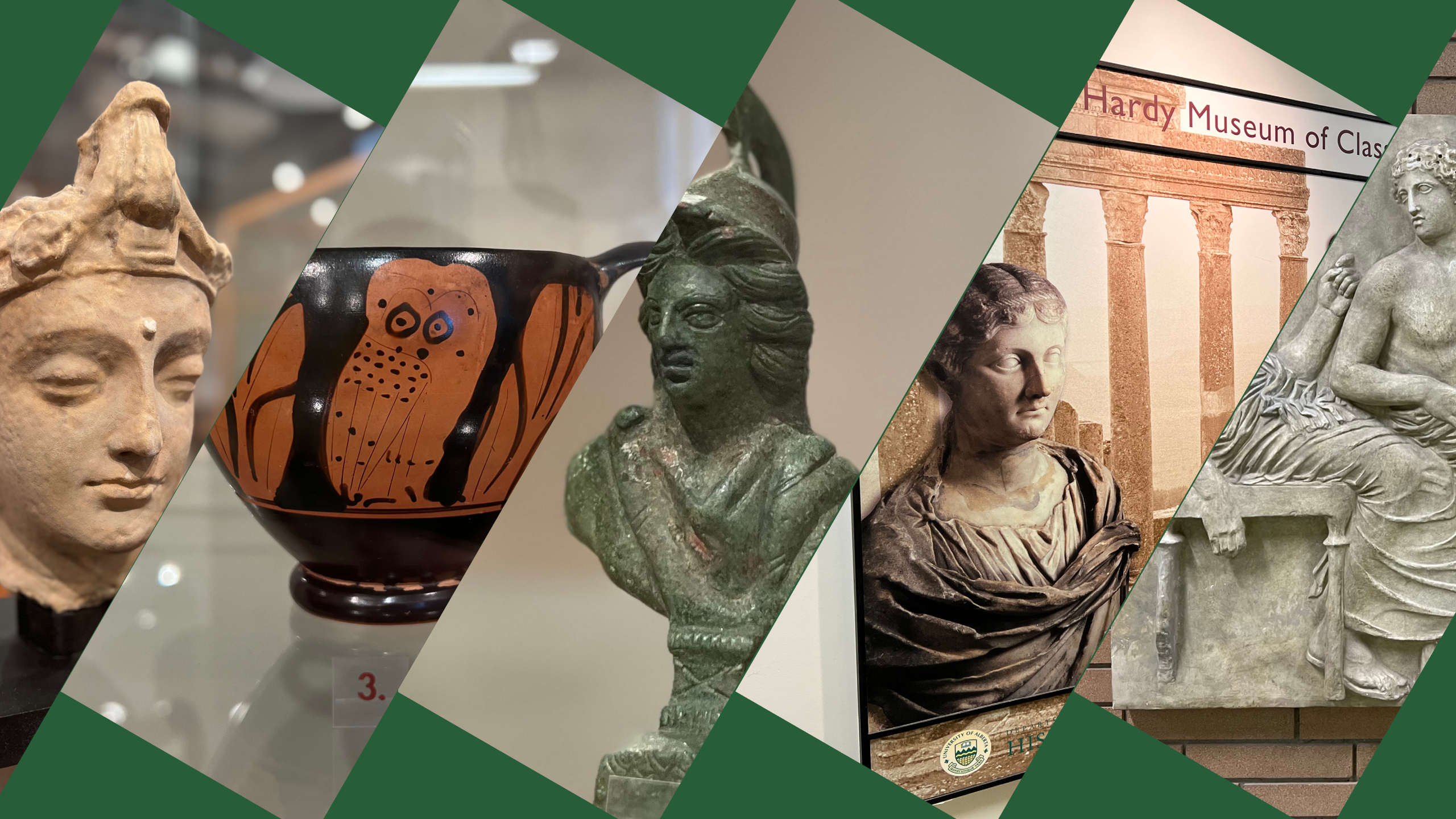When Dr. Jeremy Rossiter, who taught me senior-level Latin last semester, learned about my fascination with museums, his immediate response was to ask: "Have you been to our Classics museum?"
"Our what?" My interest was piqued.
Dr. Rossiter told me the museum was on the second floor of Tory (2-89, to be precise) - a building I have attended classes in for nearly every semester of my five-year-long Bachelor's degree - and I was shocked. I was even more surprised when he told me it had the largest collection of ancient artifacts in Western Canada! He said the museum was always looking for student volunteers because more people available to dedicate their time to the museum means more time spent open to the public.
I tagged along to the next tour of the museum given by Dr. Rossiter and realized just how much history can fit into a single small room. The collection is made up of authentic relics from across Ancient Greece, Rome, Mesopotamia and Egypt. I marvelled at the coins that were minted during the rule of a variety of Roman emperors, the stamps and tablets of cuneiform writing - believed to be the oldest existing form of written language - from Asia, the intact glass cups from Roman Britain (demonstrating one of the societies' many impressive technological innovations), pieces of jewellery, blades, knives and intricate tools, black and red painted Grecian pottery and an embroidered swatch of tapestry from Ancient Egypt. The W. G. Hardy Collection of Ancient Near Eastern and Classical Antiquities is absolutely worth a visit, and I wish it hadn't taken me until the final year of my degree to discover it!
In the interest of learning more about it - and maybe introducing it to you for the first time, if you've gone as long as I did without knowing about its existence - I spoke with some of the student volunteers who work in shifts to keep the museum open. The first thing I asked was how frequently they are met with surprise when they mention the museum to people, and nearly all of them said it happens more often than not. (We'll see what we can do about that!)
I wanted to know how the volunteers had come to find their current positions. Some, like me, said that Dr. Rossiter had recruited them from Latin class. Others attended a Classics Fair put on by the department and discovered a low-commitment way to get involved on campus; some took a tour for a class field trip and learned that volunteering was a possibility, and some heard about it from friends. Others stumbled upon the museum while they were wandering around the History and Classics department, then simply asked if help was needed.
Of course, I had to ask people what their favourite artifacts in the museum were. Some named the coins as their personal favourites, and one explained why: "I love the old coins because they have connections to specific individuals. The people on the coins sometimes come up in my history classes, and that's just such a cool connection for me." Another volunteer drew my attention to something I had completely overlooked: "The pottery jug from Palestine from the 8-7th C BCE is the coolest artifact because the fact that something so old still exists is so baffling. Especially since it was pieced together in fragments, meaning someone broke it and archaeologists were able to put it back together again." One took particular joy from an endearingly painted piece of pottery: "I really like the Athenian pottery cup with the funky, almost startled-looking owl on it. It's so fun!"


When you first walk into the museum, you'll see a model of a Bodhisattva Head from Pakistan, dating all the way back to the 4th century AD. A fun fact about it: this artifact is the only replica in the museum (aside from a glass cup in the Roman display, meant to provide a comparison that demonstrates the progression from cloudy to clear glass-making techniques). The real head, made from stucco, does belong to our university - it was gifted by Major A. Cathcart-Bruce back in the 70s - but it's too precariously balanced to be displayed safely. Hence the shockingly-realistic 3D-printed model you will find encased in the museum!
I personally love any evidence of a Roman presence in Scotland because it's a crossover of two major fields of interest for me. This small statue is so unassuming at first glance, but when we stop to consider the hands that carved it and the traces of an ancient individual it preserves, it becomes pretty spectacular.

Finally, I asked Dr. Rossiter - the curator himself - some questions about our university's classics museum:
1. How long have you been curator of the museum, and what has the experience been like?
I've been curator of the Classics Museum for more than 30 years! I first became involved with the collection when I was a graduate student at the university and took over management of the museum soon after my appointment to the faculty. The museum was originally located in the Humanities Building but was moved to the Tory Building in 2000. It's been a very rewarding experience, particularly in helping students to engage directly with the arts and crafts of the ancient world.
2. How many artifacts have you personally collected for the museum?
I've been involved with a number of acquisitions over the years; some donated, some purchased as a result of financial gifts and funding opportunities.
3. You mentioned having a dig site in Carthage - is anything from there on display in the museum?
Yes, there are some items on display in the museum which are on loan courtesy of the Institut National du Patrimoine (INP) in Tunisia following archaeological work done by the U of A in that country. These are mainly pieces of pottery, including several decorated oil lamps. The Department of History, Classics, and Religion is actively involved in archaeological work in several countries, including Greece, Italy and Tunisia.
4. What types of artifacts are the easiest to come by/most commonly found?
The most commonly surviving material from the ancient world is pottery. The collection contains examples of pottery from many ancient cultures, including painted pottery from ancient Greece and moulded pottery from the Roman world. We also have quite a few pieces of Roman glass which come from excavated burials. A selection of ancient coins, another commonly found artifact, is also on display, illustrating some of the important political figures of the Classical world.
5. I've heard the university has a mummy in storage! Do you think it will ever be on display?
The Egyptian mummy is actually part of the University Collections, not the Classics Museum. The mummy has remained in storage for many years, mainly due to a lack of a suitable space on campus for a permanent display.
The museum can only be open while there is someone to staff the desk. If you're interested in taking on a weekly shift at the Classics museum, you can get in touch with Dr. Rossiter (jrossite@ualberta.ca). We currently have it open from 10-2 Mondays, Wednesdays and Fridays, and 11-2 on Tuesdays and Thursdays - come by and take in some history!
